Family Cactaceae Rank Species | Genus Cylindropuntia Higher classification Cylindropuntia | |
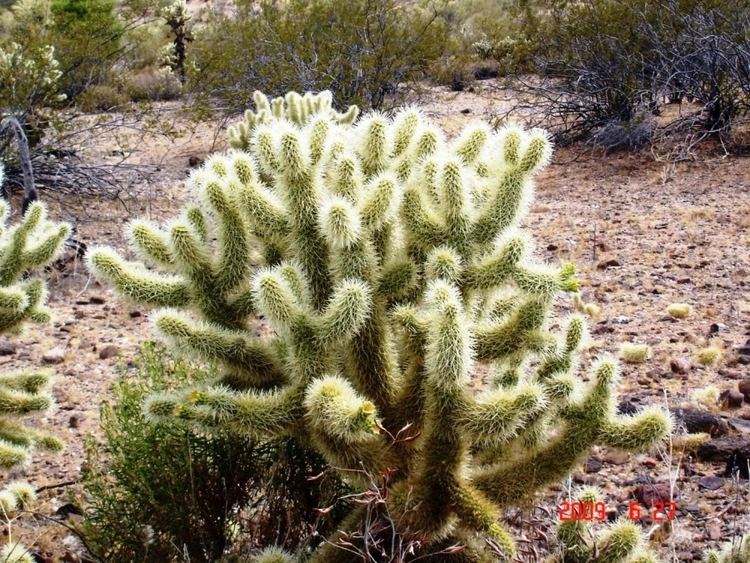 | ||
Similar Cylindropuntia, Cactus, Cylindropuntia acanthocarpa, Cylindropuntia fulgida, Cylindropuntia echinocarpa | ||
Cylindropuntia bigelovii, the teddy bear cholla, is a cholla cactus species native to Northwestern Mexico, and to the United States in California, Arizona, and Nevada.
Contents
Description
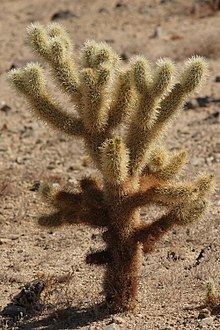
Cylindropuntia bigelovii has a soft appearance due to its solid mass of very formidable spines that completely cover the stems, leading to its sardonic nickname of "teddy bear".
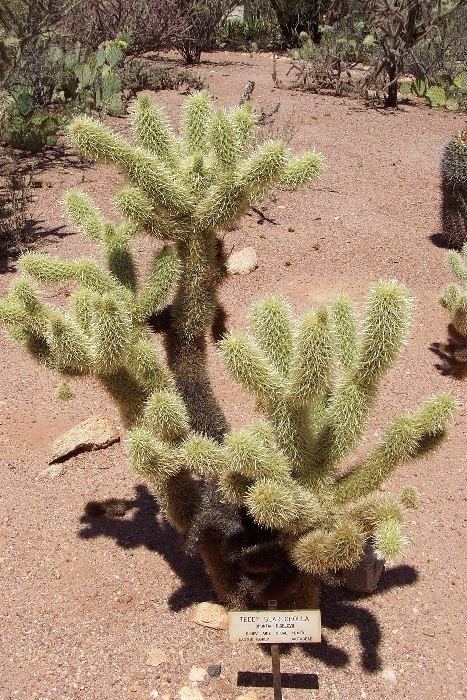
The teddy-bear cholla is an erect plant, 1 to 5 ft (0.30 to 1.52 m) tall with a distinct trunk. The branches are at the top of the trunk and are nearly horizontal. Lower branches typically fall off, and the trunk darkens with age. The silvery-white spines, which are actually a form of leaf, almost completely obscure the stem with a fuzzy-looking, but impenetrable, defense. The spines are 1 in (2.5 cm) long and are covered with a detachable, paper-like sheath.
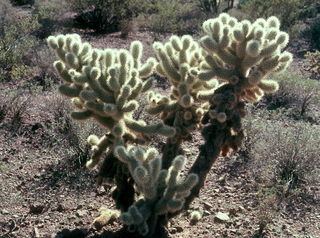
The yellow-green flowers emerge at the tips of the stems in May and June, and the fruits that follow usually have no viable seed. Flowers are usually 3.6 cm (1.4 in) in length. The fruit is 1.9 cm (0.75 in) in diameter, tuberculate, and may or may not have spines. These cacti produce few seeds, as the plant usually reproduces from dropped stems. These stems are often carried for some distance by sticking to the hair of animals. Often small "stands" of these chollas form that are largely clones of one individual.
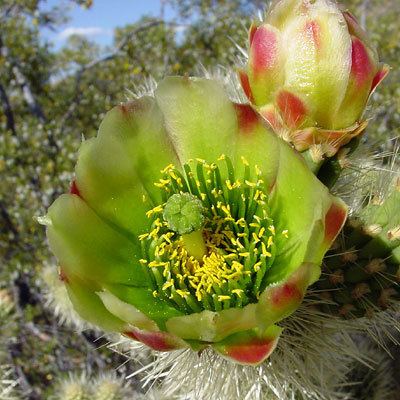
Like its cousin the jumping cholla, the stems detach easily and the ground around a mature plant is often littered with scattered cholla balls and small plants starting where these balls have rooted. When a piece of this cholla sticks to an unsuspecting person, a good method to remove the cactus is with a hair comb. The spines are barbed, and hold on tightly. Desert pack rats such as the Desert Woodrat gather these balls around their burrows, creating a defense against predators.
Distribution
Cylindropuntia bigelovii, the Teddy-bear cholla, grow in desert regions at elevations to about 3,000 ft (914.4 m) in the "Low Desert" or Colorado Desert of Southern California, and in other Sonoran Desert regions of the Southwestern United States and northwestern Mexico.
In the Lower Colorado River Valley, the most dense Cylindropuntia bigelovii stands are at higher elevations, in the rockiest sites. There are fewer Sonoran Desert or Colorado Desert plant association species, but two are common though reduced in size: Ocotillo (Fouquieria splendens) and Saguaro (Carnegiea gigantea).
